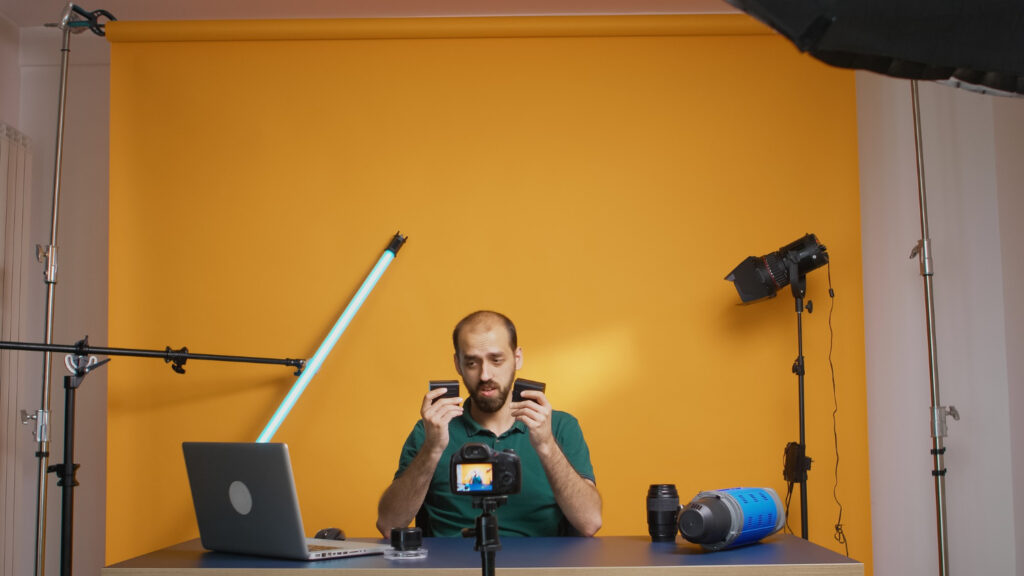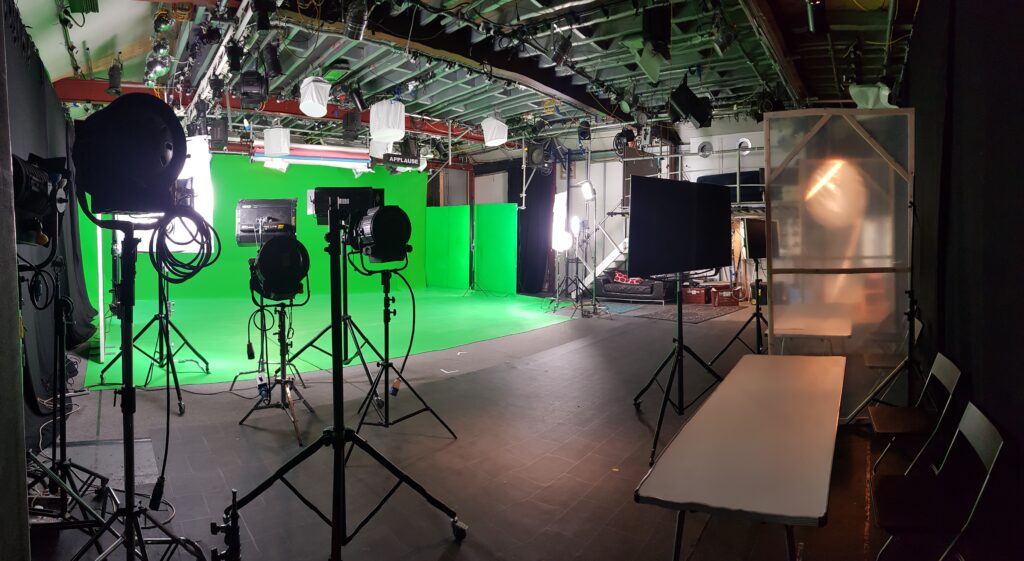As digital content continues to evolve, creators face a pivotal question: Should I keep producing content from home, or is it time to invest in a professional video studio? While home setups offer convenience and control, there comes a point when growth demands a shift in environment. This article explores the critical differences between home and studio production, helping you determine when that transition makes sense for your goals.
The Rise of Home Setups: Benefits and Constraints
For many creators, the home setup is where the journey begins. It’s low-barrier and flexible, allowing for experimentation with equipment, schedules, and formats. The rise of affordable cameras, USB microphones, and editing software has empowered thousands of freelancers, educators, musicians, and podcasters to reach their audience without leaving home.  However, these setups often come with limitations. Acoustics can be inconsistent due to untreated spaces. Visuals are frequently affected by poor lighting and cluttered backgrounds. Power outages, construction noise, or household distractions can interrupt sessions. Over time, these challenges can create friction in your creative process. Creators at this stage often find themselves troubleshooting rather than creating, adjusting sound levels, repositioning lights, and correcting echo issues in post-production. While these limitations may be manageable early on, they can hinder growth as content expectations rise.
However, these setups often come with limitations. Acoustics can be inconsistent due to untreated spaces. Visuals are frequently affected by poor lighting and cluttered backgrounds. Power outages, construction noise, or household distractions can interrupt sessions. Over time, these challenges can create friction in your creative process. Creators at this stage often find themselves troubleshooting rather than creating, adjusting sound levels, repositioning lights, and correcting echo issues in post-production. While these limitations may be manageable early on, they can hinder growth as content expectations rise.
When a Studio Becomes Essential
A professional studio is not just about high-end equipment but also about consistency, control, and support. Studios like Soundstage Studios offer environments tailored for efficient production: acoustically optimized rooms, blackout options for cinematic lighting control, and on-site technical assistance for recording, editing, and monitoring. The studio experience becomes vital when:
- Content becomes client-facing or monetized.
- You need consistent quality for branding or sponsorships.
- You’re collaborating with guests or teams.
- You’re working on long-form content or a series.
Studios also reduce the technical overhead. Instead of spending an hour tweaking your mic or camera settings, you walk into a ready-made space. Your energy shifts from managing equipment to delivering content.
Comparing Studio vs Home Setup: Key Considerations
Here’s a quick look at the differences between home and studio setups across practical categories:
| Feature | Home Setup | Professional Studio (e.g., Soundstage Studios) |
| Audio Quality | Inconsistent, room-dependent | Professionally treated, high-fidelity recording |
| Video Quality | Limited lighting & background | Controlled, cinematic visuals with blackout options |
| Technical Support | Self-managed | On-site professionals for sound, camera, and lighting |
| Equipment Access | Personal gear | High-end multi-camera, mics, and lighting gear |
| Time Efficiency | Longer setup & post-production | Streamlined workflow, faster content delivery |
| Professional Image | May appear unprofessional | More credible for brands and collaborations |
Signs You’re Ready for a Professional Video Studio
You might not need a studio for every project, but if you’re encountering any of the following challenges, it could be time to explore one:
- You’re re-recording segments due to noise or echo.
- Your videos require significant post-production to fix lighting or sound.
- Guests on your show feel cramped or uncomfortable.
- Your audience or clients expect a higher production value.
- You’re aiming to create documentary-style, narrative, or branded content.
Soundstage Studios Tip: If you’re shooting interviews or narrative content, use a blackout studio with focused lighting to isolate your subject and create a cinematic mood. This removes visual distractions and helps maintain consistent lighting between scenes, perfect for YouTube interviews and professional podcast visuals.
Consider Your Creative Workflow
Before you commit to a studio environment, conduct a short audit of your past content. Look at your five most recent pieces. Ask:
- Were there recurring technical issues?

- Did you spend more time fixing problems than creating?
- Was the final product aligned with your creative vision?
If you answered yes to any of these, a professional space could offer the stability and support you need to evolve your craft.
Final Thoughts
Choosing between a home setup and a professional studio isn’t just a matter of cost- it’s about creative potential. As your content matures, so should the tools and environments you use. A professional studio empowers you to create with intention, polish, and consistency- qualities that define professional creators today.
Ready to Elevate Your Content?
At Soundstage Studios, we provide creators with spacious studios designed for flexibility, collaboration, and high-end production. Whether you’re recording a podcast, launching a new YouTube series, or hosting client shoots, our multi-format studios and blackout rooms help you bring your vision to life seamlessly and professionally. Visit Soundstage Studios today to book your session and explore how our space can support your next creative breakthrough. FAQ: Studio vs Home Setup for Creators
What are the main differences between a home setup and a professional studio for creators?
The key differences lie in cost, flexibility, equipment quality, and the environment. Home setups offer flexibility and lower long-term costs, allowing creators to work whenever inspiration strikes and experiment freely. However, they often face limitations in room acoustics, gear quality, and technical support. Professional studios, while more expensive (typically charged by the hour), provide superior sound quality, expert guidance, and access to high-end equipment and acoustically treated rooms. Many creators use a hybrid approach, handling pre-production at home and finalizing critical elements in a studio.
When should a creator consider investing in a professional studio space?
Creators should consider a professional studio when their projects demand pristine audio quality, such as commercial releases, full band recordings, or acoustic instruments that require expertly treated acoustics. A studio is also ideal when collaborating with other professionals, needing technical support, or seeking a distraction-free environment that boosts productivity and creativity. If your home setup is limiting your results or you’re aiming for industry-standard output, it’s time to explore studio options.
What are the main advantages of having a home studio setup?
A home studio offers unmatched convenience and affordability, with a one-time investment for equipment and the freedom to create at any time. It allows for unlimited practice, experimentation, and the ability to work at your own pace. Home studios are also private spaces for meetings and collaborations, and can provide a competitive edge if set up professionally. However, distractions and the lack of networking opportunities compared to commercial studios are notable drawbacks.
What factors should creators consider before choosing between a home setup and a studio?
Key factors include the type of content being created (music, video, podcasting), required sound quality, budget, available space, and long-term goals. Creators should also assess their technical skills, the need for professional guidance, and whether their work would benefit from networking or collaboration opportunities found in studio environments. The project’s demands, such as the need for specialized equipment or acoustics, should guide the decision.
Is it common for creators to use both home and studio setups, and how can this hybrid approach be effective?
Yes, many creators adopt a hybrid workflow. They often record demos, electronic music, or pre-production elements at home to save costs and maximize flexibility. For critical tracks-like vocals, drums, or complex arrangements, move to a professional studio to leverage superior acoustics and expert engineering. This approach balances budget, convenience, and production quality, allowing creators to get the best of both worlds.

